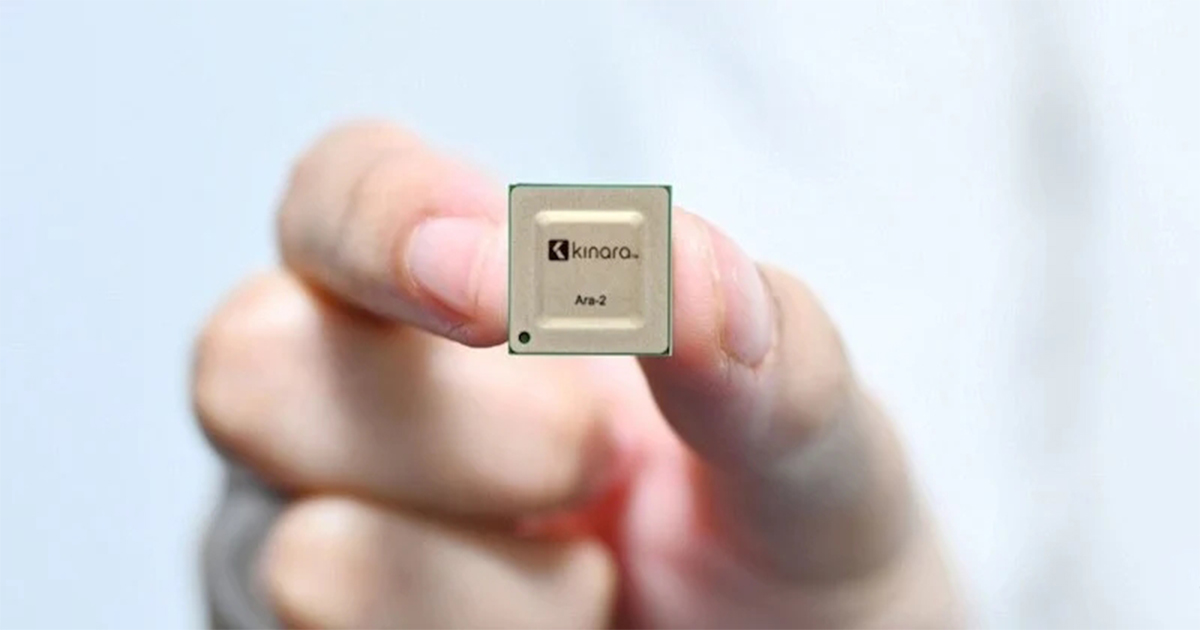Exclusive: A Closer Look at IBM’s Heron and Condor Quantum Processors
In this All About Circuits exclusive, we interviewed IBM Quantum's chief technology officer to hear more details about the company's newest quantum processors—one of which IBM calls its "most performant quantum processor in the world".
This week, IBM released two new quantum processors, Heron and Condor, that build on the company's Osprey processor released in January 2023.
.jpg)
IBM's Heron 133-qubit quantum processor.
To learn more about these new processors, we spoke to Oliver Dial, IBM fellow and chief technology officer at IBM Quantum, who contributed to the chip's development.
Heron and Condor Undergo Two Distinct Dev Processes
To realize the Heron and Condor processors, IBM researchers had to tackle distinct sets of technical challenges. Condor, designed and fabricated over nine months, is an extension of the Osprey processor introduced earlier this year.
“One of the big focuses of Condor was simplifying the wiring outside the qubit chip—untangling the I/O as much as possible on the chip to simplify everything else inside of the dilution refrigerator,” Dial explained.
“To accomplish that, the multi-level wiring we used on Eagle and Osprey was expanded from three levels (ground-signal-ground or GSG) to five levels (GSGSG), allowing routes to cross."
Another challenge the team faced was ensuring the reliability of the fridge's wiring. This meant finding new, simple tools to allow IBM's scientists to quickly and easily test the wiring as it was installed.

The Condor 1,121-qubit quantum processor.
In contrast to Condor, the Heron processor is based on a new on-chip architecture that relies on tunable couplers—programmable electrical devices that connect different components. An earlier version of this architecture was tested on the company’s Egret processor, released in 2021, but the team further improved it before introducing it in Heron.
While Dial and his colleagues worked on the chip powering Heron, hardware specialists at IBM developed a new generation of electronics that drive the tunable couplers in the processors.

The Heron 133-qubit quantum processor.
“The schedule for getting Heron out in 2023 was so tight that we actually tested the first prototype device using two entire racks of commercial arbitrary waveform generators (AWGs) to control the couplers,” Dial explained.
“There are still some small performance differences between that initial prototype and the ‘finished product’ that we are trying to figure out. Once we do, I expect the Heron that we have deployed to get better soon.”
Unique Features of the New Processors
While Condor’s architecture resembles that of IBM’s Osprey processor, the new processor contains over 1,000 qubits, a significant improvement from the 400+ qubits of its predecessor. On the chip itself, Dial and his colleagues went from three levels of multi-level wiring in Osprey to five levels in Condor, which allows the processor to route more signals from the qubits to the edge of the chip.
“Outside of the chip, we pushed out flexible ribbon cables to the extreme, fully populating a dilution refrigerator for the first time with over a mile of signal trace,” Dial said.
“We incorporated a new compact design for the magnetic shielding around the quantum processor itself, a change that will become invaluable as we explore multiple processors in single dilution refrigerators with l-couplers.”
The most unique property of the Heron processor is its new architecture based on tunable couplers, which require additional input/output on the chip. Even though Heron only has 133 qubits, it contains almost as many I/O lines as the Osprey processor, which are then transferred to where they are needed on the chip via three-level wiring.
“Outside of the chip, the new signals for controlling the tunable couplers required new designs for ribbon cables and an additional variant of our control electronics to provide those unique signals,” Dial said.
“Finally, we had to make changes to our software stack—the ‘quantum engine’ that directly controls our devices to support using the new control electronics.”
The team at IBM does not expect the Condor processor to be as useful for performing quantum computations as Heron and views it more as a research quest aimed at upscaling the company’s hardware and software stack. Heron, on the other hand, marks a significant improvement in gate fidelity and performance and is expected to yield significantly better results on complex computations.
Next Steps for IBM Quantum
The Condor and Heron processors represent an important milestone on the path to high-performance quantum computers. The Condor processor is in its last stage of development and will be used to realize 1,092-qubit Flamingo quantum processing units (QPUs) next year.
The research team is still developing Heron to improve its performance in the wild.

IBM's most recent quantum processors.
“We’re now upgrading Heron’s control electronics and wiring (again!) and making some small design tweaks,” Dial said. “While the best and median gates are much better, there is a ‘long-tail’ of fairly poor gates, corresponding to qubits that are interacting with two-level systems (TLSes)—microscopic defects from fabrication. We’re currently working on Heron R2, including additional controls to let us mitigate those TLSes.”
Notably, the Heron R2 processor will also include the five-level wiring processor deployed in Condor, which could further enhance its performance. In addition to working on Heron R2, Dial and his colleagues will continue improving the scalability and stability of IBM’s software stack and developing new strategies to mitigate errors in quantum devices.
For more information on the state of quantum computing and IBM's specific efforts in this field, you can check out Oliver Dial's keynote address at All About Circuits' 2023 Industry Tech Days.



